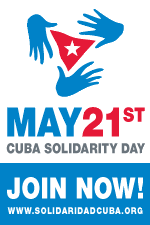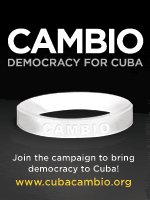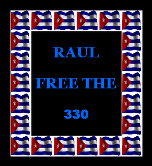But can you imagine living in Cuba, regardless of your political views and having these tourist travel to your home and gawk at you as if you were some kind of exhibit of a land stuck in the fifties?
Today, will be a day I remember because not only is it tax day, but it’s also the day that I found common ground with a communist Cuban brother, Enrique Ubieta Gómez, who writes for Juventud Rebelde who comments just about this subject. I’m purpose editing the mandatory defenses to the revolution conspicuously written in their own stand-alone paragraphs to prove that this piece can stand on its own and make a statement without the imposed ideological slant.
On Friday, as I travelled through the streets of Central Havana heading towards Havana’s Convention Center, where the closing ceremony of the Seventh Congress of UNEAC (National Union of Writers and Artists of Cuba) would take place, I saw —as usual— several tourists taking pictures standing beside the “Big almonds” (American cars from the 1950s).
Some tourism promoters followed the market logic and created a taxi company charging in hard currency. This allowed tourists to realize a most unusual dream: to escape the engulfing present in a time-machine that takes them through a city that is frozen in its architectonic evolution. They are driven around in cars that were luxurious – four, five, or six decades ago.
Like characters in a Spielberg movie, the time-travelling tourists sample this mysterious island where there are still dinosaurs to offer proof of their discoveries. The pictures they take don't reveal that there are thousands of professionals in this city, or a similar amount of university students; or that there are no illiterate people among the passers-by, who are taped or filmed with video cameras; or that there are only five deaths per every a thousand newborns.
The same happened with music. An astute businessman assembled a wonderful group of vintage singers —in a country that has wonderful signers of all ages— and made them famous.
The music, cars, buildings, and a stubborn socialism —a “twentieth-century ideology” that has supposedly fallen into disuse— complemented each other allowing the tourist to live the past while in the present. Paradoxically, the symbols of socialism —a “Homeland or Death” billboard or the face of Che painted on a wall, or the scarf of a school uniform— were also photographed as parts of a “bygone” epoch. They were seen as superimposed images of passed times, like a post-modern pastiche.
The images represent a gold mine for some craftspeople, who sell serial paintings —in oils, wood or papier-mâché— of old cars and a few clichés of the now-disappeared vernacular theatre, which is performed in the middle of the street for the unsuspecting (or not) “Gallego” (Spaniard), or in a more up-dated version for any Italian.
In these days of UNEAC’s 7th congress, we have reflected about these and many other matters. I have been proud to be a Cuban intellectual, proud to have met with other writers and artists to share concerns and points of view about the spiritual life of the society we belong to, instead of speaking only about past literary, theatrical
or artistic tendencies.
Regarding the huge problems we are still facing, (Lage) said “they are the wounds of war, but of a war we have won.” It is a pity that those intoxicated visitors, victims of media manipulation, do not know how to look at the inside of the country, I mean, under its skin. It is sad to live without hope, without reasons to fight for a better world.
It's interesting, that as cubans, regarless of our potitics, we can agree that the tourist gawkers that travel to the quaint island that time forgot are "like the Spanish in America in the 16th century America, they look without seeing."







No comments:
Post a Comment